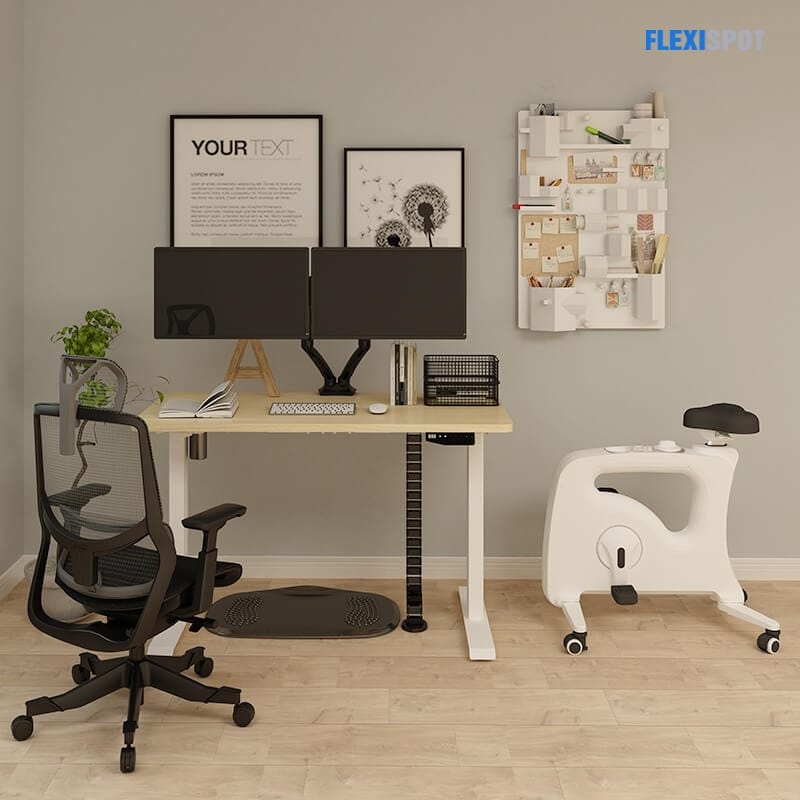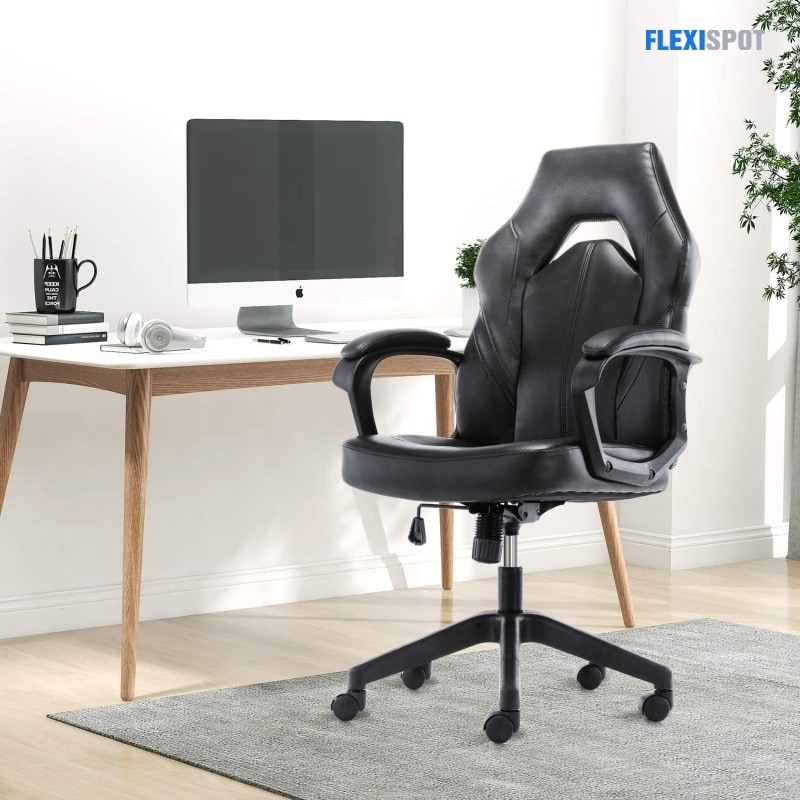It's essential to set up a secure, ergonomic workspace at home if you're one of the many individuals working remotely to promote social distance during the COVID-19 pandemic. Many life lessons have been learned, and making the most of a challenging situation is among them. We, like hundreds of others around the world, were forced to work at home. To create a fresh and productive workstation at home, many of us had to get imaginative. Many of us converted a corner of our private home into an office, a phenomenon that is predicted to remain and emerge as a glimmer of hope to the global health issue.
Defining Ergonomics
Ergonomics is a scientific principle. It is the science of creating products, settings, and systems tailored to the user's demands. Ergonomics attempts to increase overall productivity and efficiency and eliminate discomfort regularly. Understanding and appreciating ergonomics in the workplace, whether in the office or at home, is critical for avoiding injuries caused by bad posture or the impact of repetitive actions. Ergonomics also takes into account the significance of movements throughout the day.
Physical inactivity, bad posture, or a poorly structured workspace can all contribute to lower back pain when working in a sedentary desk job. Back discomfort might be made worse by the way you move. Sitting behind a desk for eight hours a day can induce rigidity and tightness, making working difficult. You may be at an even higher risk of experiencing back discomfort if your work demands you to twist or bend regularly.
It's critical to ensure that you're working in a comfortable environment to maintain a positive working relationship. When you work in an office, you have limited influence over the type of setup available to you; but, when you work from home, you can build an ideal ergonomic workstation for your performance and well-being.
How
Let us walk you through a few steps and tips on establishing an ergonomic workspace at home, whether you're seeking to update your current setup or construct your first ergonomic workstation.
Your Computer Monitor Level
Maintaining proper posture while working is critical to avoiding injuries to your neck, shoulders, and back. However, many people take the approach of using a laptop on their lap or a surface that is simply not high enough and forces you to stretch your neck downwards.
Set up your laptop or computer at eye level using stuff you already have at home, such as boxes or books, to reduce the amount of tension on your neck and head. Keeping your neck and head in a relaxed position will be easier if you place your display at eye level.
Your elbows must be at the same height as your desk, bent at a 90-degree angle. Your arms should rest comfortably near your torso, with the majority of your forearms resting on the desk or chair armrests. Straighten your wrists in front of you and keep them in a neutral vertical position.
Instead of straining to reach pencils or your phone, keep all regularly used objects within close reach. Have your mouse near your keyboard and your keyboard near you. Check that you can reach everything without stooping or extending.
You are more inclined to lean towards your computer monitor if the brightness on it is too dim. Consider increasing the size of your font if you ever need to squint to read anything. This will allow you to maintain proper posture while reading comfortably.

STANDING DESK
Kitchen tables are frequently excessively high, and conventional desks are typically set at a suitable height for writing rather than typing. Our ergonomic height-adjustable standing desks are designed to address this specific issue. You may set up your desk at the ideal height comfortable for you with a simple one-touch adjustment. Check out our suggestions.
The Comhar All-in-One Standing Desk is a revolutionary workspace that is so robust and functional that it not only improves productivity by preventing you from sitting all day but is also loaded with functionality and has a captivating elegance that distinguishes it from its rivals. It switches from your perfect sitting position to your preferred standing position at the touch of a button, all while retaining your monitor, mouse, and keyboard in the best ergonomic position for efficient and productive work.
Let's have a look at the features of Comhar:
Programmable Height Presets: The Comhar is great for many users to save their favorite height setting in a family or work-share environment with four programmable height presets.
Spacious Embedded Drawer: A simple pull-out drawer integrated into the tabletop provides convenient integral storage space for your essentials.
Convenient USB Charging: The desk has three convenient USB charging connections (2 ports for type A USB and one port for type C).
Ideal Corner Desk for a Small Space: All that's needed to accommodate Comhar for putting up your own home corner office is a nook, corner, or blank wall.
Anti-Collision Function: The anti-collision system protects the desktop by preventing it from being damaged or crushing other objects and gadgets while in motion.
Safe Lock Button: By pressing this button, you can disable the control panel feature, preventing unintended touches from your kids or furry, four-legged coworkers.
Get your own Comhar All-in-One Standing Desk by clicking here!
A Comfy and Supportive Desk Chair
Even if you have the best standing desk available, a good ergonomic and comfy chair is vital. Given that we spend approximately half of our day sitting, it is one of the most critical parts of a healthy work environment. When it comes to setting up a home workspace, making sure you have a nice ergonomic chair and, if necessary, lumbar support should be a focus. Click here to see some of the best ergonomic office chairs.
If purchasing a high-end office chair is not on your priority list for maintaining an ergonomic workspace at home, it is critical to alter your chair or setting in a manner that provides support to your lower back. Without any special equipment, the best way to accomplish this is to sit back in your chair. If you require additional lumbar support, use a small cushion or rolled towel at the bottom of your spine. This helps your back keep its natural curve.
Maintain Proper Posture
When sitting for longer durations, it is simple to slump or lean unconsciously. Poor posture can cause considerable back discomfort over time, leading to persistent back problems if not remedied promptly. Good posture reduces the gravitational stress on the spine, resulting in increased comfort and a lower chance of back pain. Here are some tips for sitting with good posture:
Maintain a straight line with your head and neck right above your shoulders.
Keep your back on the backrest of your chair.
Maintain a straight back and a square face to your computer monitor.
By bringing your chair closer to your workstation, you can keep your upper arms parallel to your backbone.
Keep flat feet on the floor and avoid crossing your legs.
Maintain a 90-degree angle with your knees and, if necessary, use a footrest.
Remember to maintain your body relaxed when modifying your posture. If you already have back discomfort, a tight posture can aggravate your neck and back problems.
Take Frequent Quick Breaks
When working from home, the most important thing you can do for your health is to get up and walk around during the day. Whether or not you have the most ergonomic desk at home, you must take breaks to stretch, walk, and change positions. A good break could look like this:
Following a stretching video.
Taking a quick stroll around the block (while observing social distancing)
Doing some meditation and yoga
Dancing in the living room with your partner or children
Going a few times up and down a flight of stairs
Wear Supportive Shoes and Use a Mat
Supportive and comfy shoes will help increase your back comfort if you are standing for an extended period of time. If you must stand on a concrete floor, put an anti-fatigue mat or any soft, cushion mat beneath your workstation. Even if you spend most of your day sitting, wear low-heeled shoes that promote appropriate posture at all times.
Have the Right Tools
It goes beyond office chairs to create the most effective and practical workstation at home. The following tools and accessories are sometimes overlooked or taken lightly, are vital for everyone who aspires to have a comprehensive and productive remote working experience. While your computer and monitors are the primary components of your workspace's tech, you also need a decent keyboard and mouse to function.
Ergonomic Keyboard: An ergonomic keyboard can assist you in more comfortable positioning of your body, with your shoulders rested, upper arms near to your torso, and forearms level with the floor.
Ergonomic Wrist Pad: Using a wrist pad or rest for extra ergonomic wrist support can boost your comfort while working while preventing ailments such as tendonitis or carpal tunnel syndrome.
Ergonomic Mouse: An ergonomic mouse is built to facilitate your hand's organic grasp and motions. Using an ergonomic mouse can prevent serious difficulties by encouraging a balanced position and a comfortable grip.
Your remote work lifestyle may be unanticipated, but it does not have to be harmful to your health. You can work safely, successfully, and effectively in your own home if you use the right equipment, accessories, arrangement, and body configuration.






